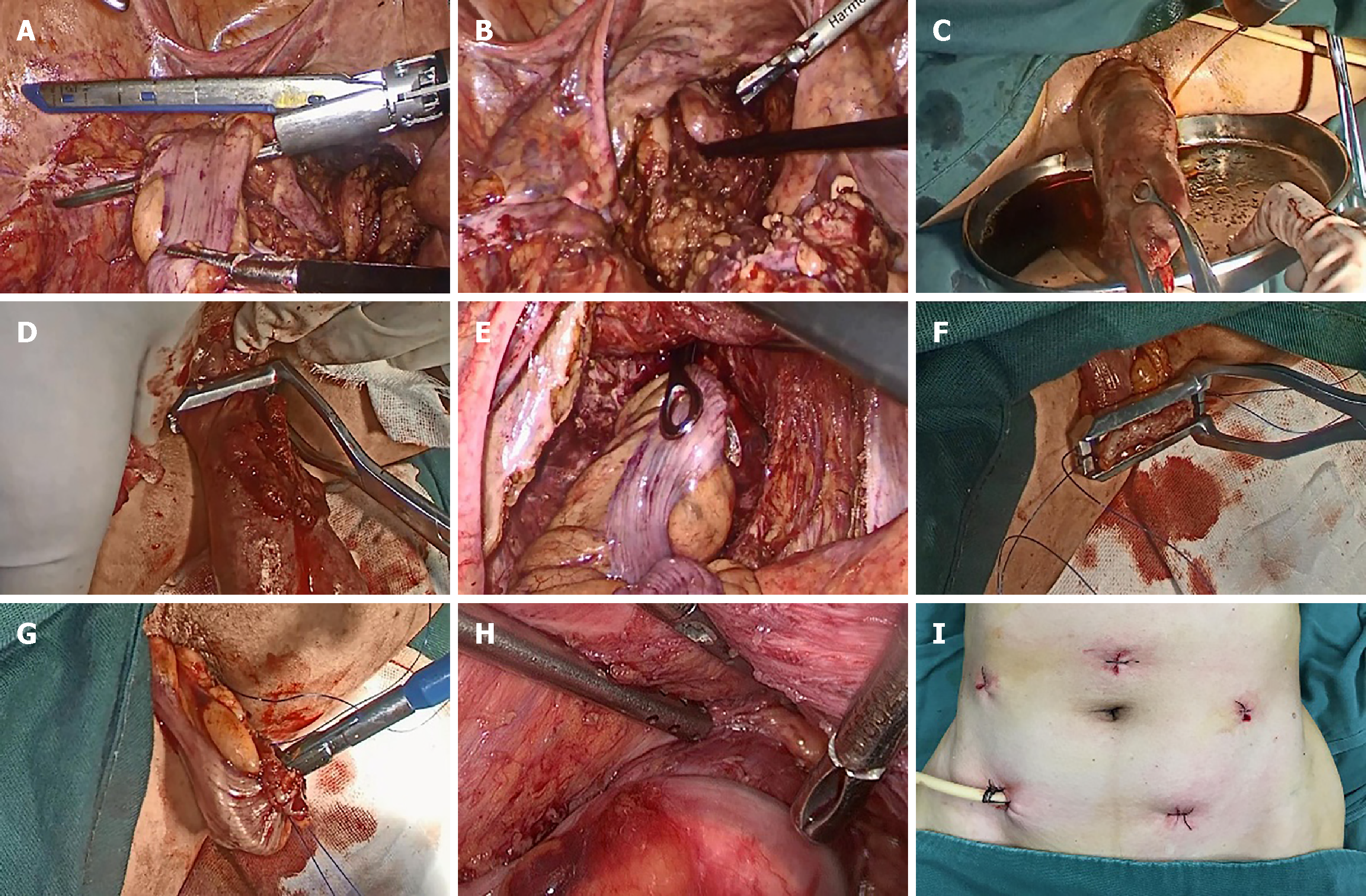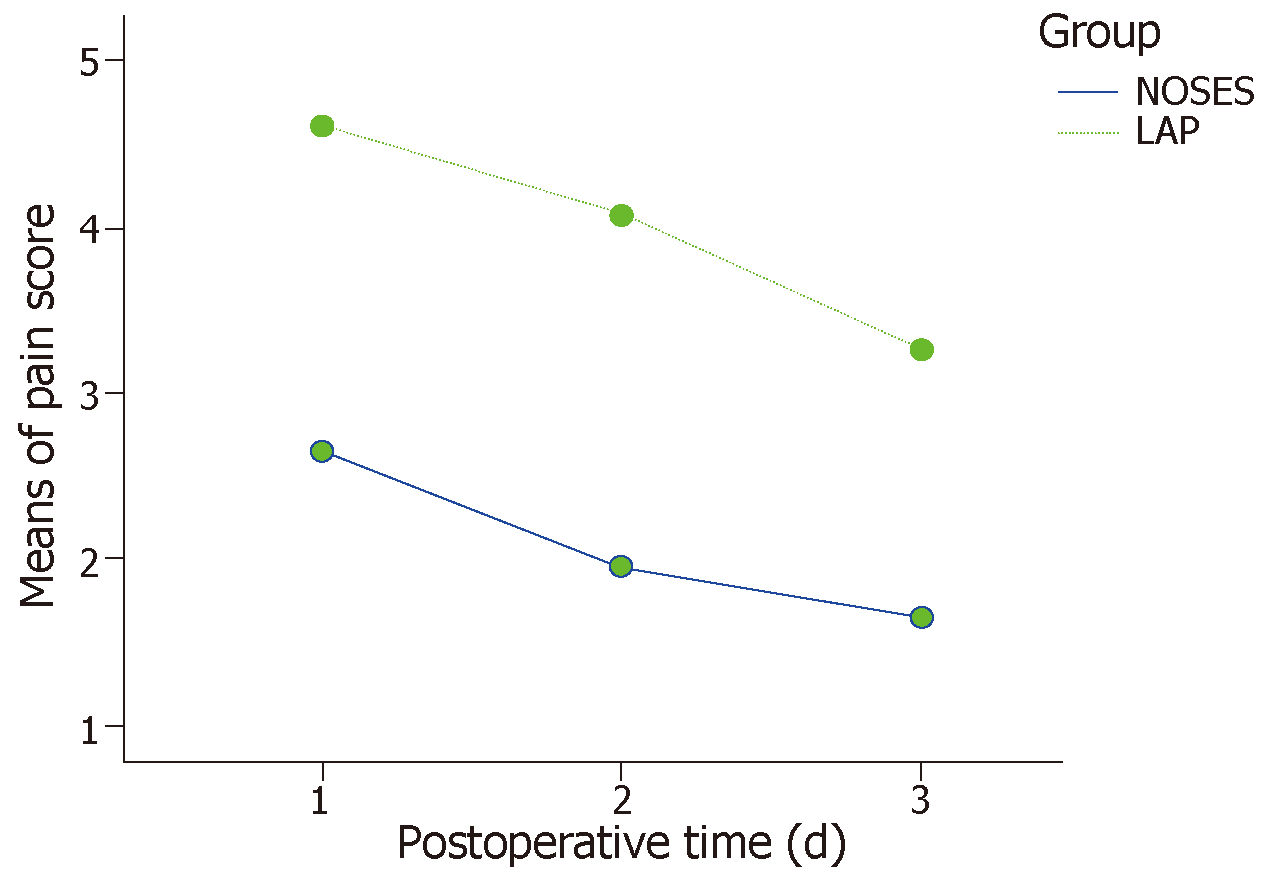Copyright
©The Author(s) 2019.
World J Clin Cases. Jan 26, 2019; 7(2): 122-129
Published online Jan 26, 2019. doi: 10.12998/wjcc.v7.i2.122
Published online Jan 26, 2019. doi: 10.12998/wjcc.v7.i2.122
Figure 1 Surgical procedure.
A: The bowel loop was divided at the site 10 cm proximal to the tumor; B: A pair of purse-string forceps was inserted via the anus to hold the end of the rectal stump, which was then pulled and everted out of the body through the anus; C: Dilute complex iodine was used to wash the everted rectum serval times; D: Under direct vision, the purse-string forceps were used to clamp the rectum at the site 1 to 2 cm below the tumor; E: A pair of sponge forceps was inserted via the anus to pull the distal sigmoid colon out of the body through the anus; F: The blood supply to the distal end of the sigmoid colon was verified; G: The anvil was inserted into the sigmoid colon and the purse-string was secured onto the anvil shaft; H: Rectal sigmoid end-to-end anastomosis; I: There was no auxiliary incision in the abdominal wall.
Figure 2 Postoperative pain scores between the natural orifice specimen extraction surgery group and the laparoscopy group.
NOSES: Natural orifice specimen extraction surgery; LAP: Laparoscopy.
- Citation: Hu JH, Li XW, Wang CY, Zhang JJ, Ge Z, Li BH, Lin XH. Short-term efficacy of natural orifice specimen extraction surgery for low rectal cancer. World J Clin Cases 2019; 7(2): 122-129
- URL: https://www.wjgnet.com/2307-8960/full/v7/i2/122.htm
- DOI: https://dx.doi.org/10.12998/wjcc.v7.i2.122














